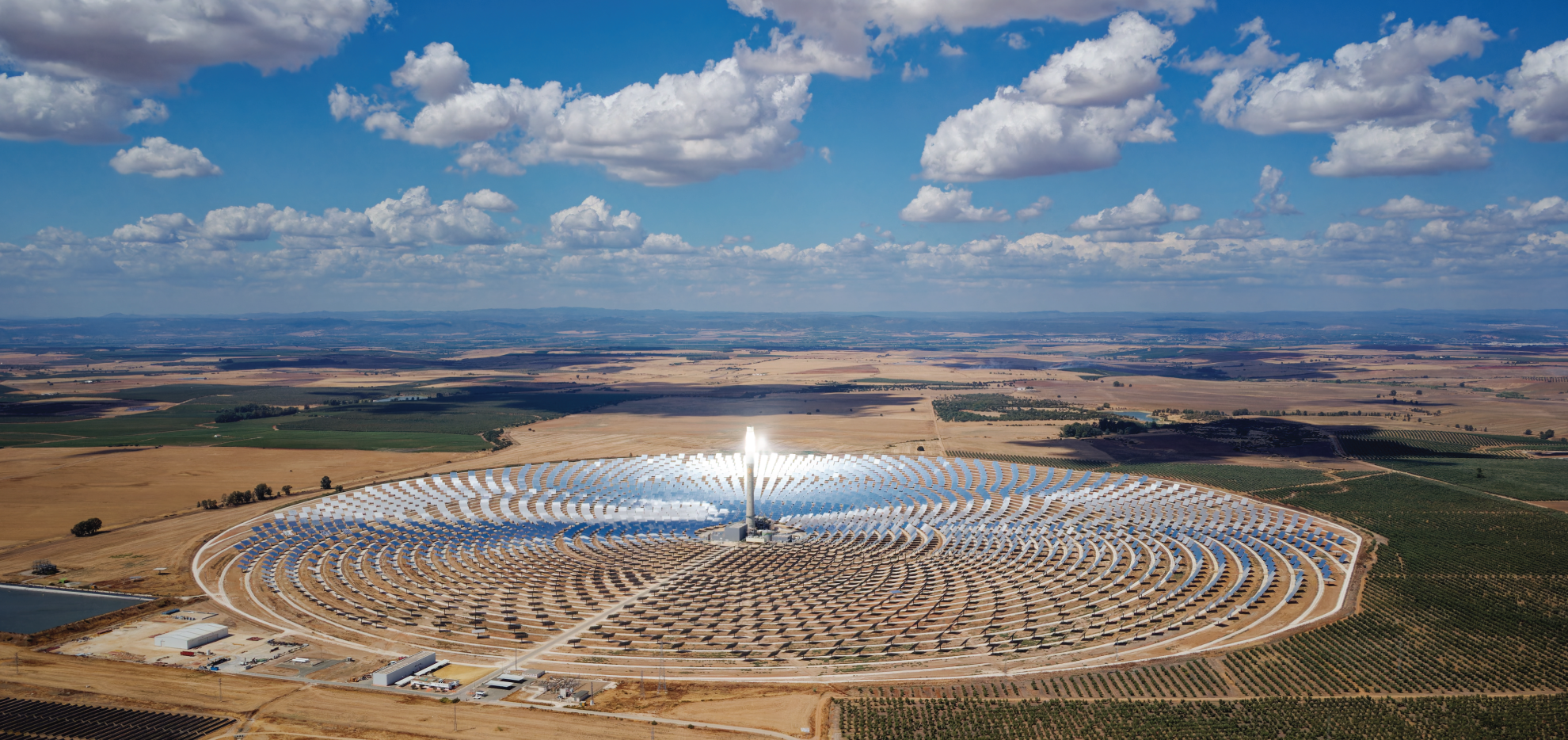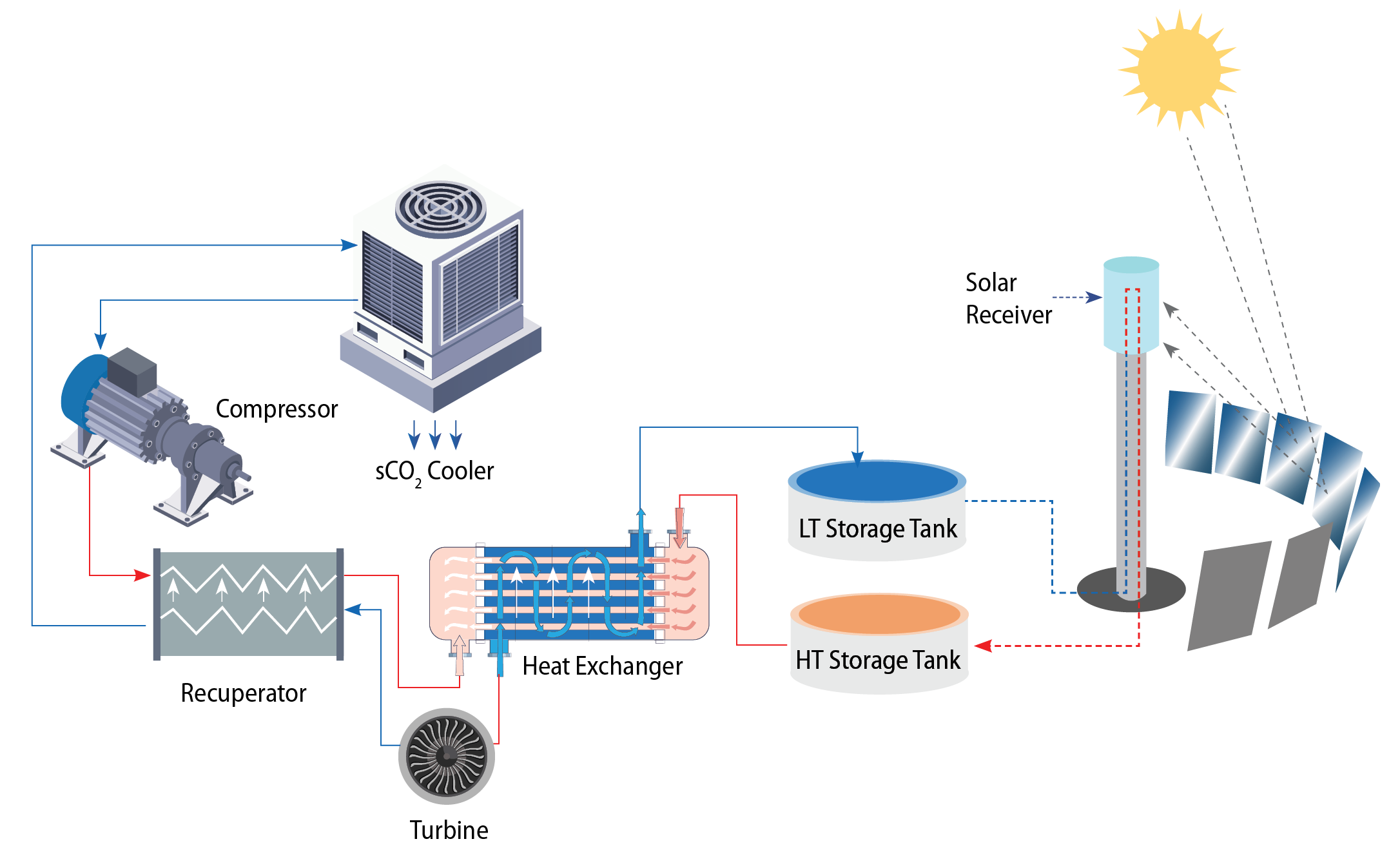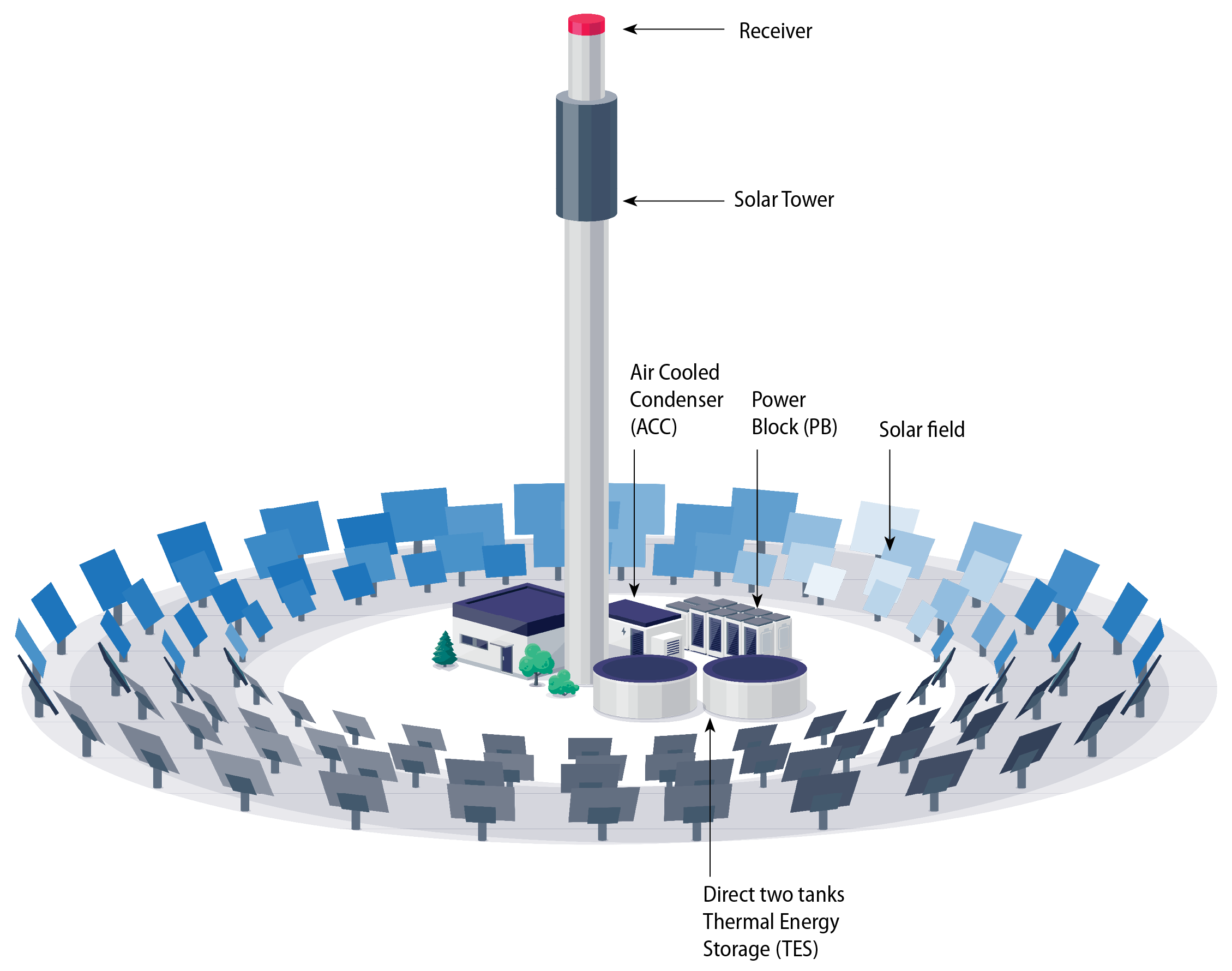Uninterrupted Power Generation with Solar Energy: A Greener Path for India

As India moves towards reducing its dependence on fossil fuels, the country is gearing up to install 500 MW of renewable energy capacity by 2030, in line with its commitment to cutting greenhouse gas emissions. However, renewable energy sources like solar and wind have inherent variability and uncertainty, making it essential to integrate them with conventional power generation systems to ensure uninterrupted power supply. One such promising solution lies in the integration of Concentrated Solar Power (CSP) with supercritical carbon dioxide (sCO2) Brayton cycle technology, which has the potential to revolutionise power generation.

New Trends in Power Generation: Higher Efficiency & Renewable Integration
In the power industry, technological advancements are focusing on two critical areas: increasing energy conversion efficiency in conventional power systems and adopting renewable energy sources for a greener, sustainable future. The conventional Brayton cycle, using sCO2 as the working fluid, offers a significant advantage due to its higher efficiency and lower water requirements.
The integration of sCO2 technology with renewable energy sources, such as CSP, holds the key to efficient and reliable power generation. This system can provide continuous, uninterrupted power while meeting the requirements for sustainability and environmental friendliness.
The sCO2-CSP Integrated Power Cycle
At the heart of this innovation is the integration of the sCO2 Brayton cycle with CSP. The cycle consists of several key components: the CSP system as the primary heat source, sCO2 turbines, compressors, molten salt heat exchangers, gas coolers, and recuperators. In this setup, the molten salt heat exchanger transfers heat from the CSP to the sCO2 stream before it enters the turbine, enabling the system to operate at high efficiency.
One of the standout features of sCO2 technology is its ability to compress near its critical point (73.9 bar and 304.25 K), where the properties of CO2 allow it to behave like both a liquid and gas. This unique property results in an energy-efficient and compact system, making it an attractive option for new power plants. In fact, sCO2-based systems can achieve higher efficiencies even in smaller-scale plants, unlike traditional steam-based systems that require larger installations to be efficient.
Why Concentrated Solar Power?
Among the available renewable energy technologies, CSP stands out as a highly efficient thermal power plant solution. Tower-type CSP, in particular, can achieve the high temperatures needed for maximum efficiency in an sCO2 Brayton cycle. In this setup, sunlight is focused onto a receiver at the top of a tower using sun-tracking mirrors, known as heliostats. The heat captured is then used to power the sCO2 turbine cycle.
One critical component of a CSP system is its thermal energy storage (TES) system, which ensures continuous power generation even during periods without sunlight. TES systems typically use high-temperature heat transfer fluids, such as solar salts, which can operate at temperatures up to 600°C, storing and transferring heat to the power cycle.

Advantages of sCO2 and CSP Integration
The integration of sCO2 with CSP offers several key benefits, making it a potential game changer in the power generation landscape:
- Higher Efficiency with Lower Water Consumption: sCO2-based systems consume significantly less water and occupy a smaller footprint compared to conventional water/steam cycle-based plants. This makes them ideal for deployment in desert and arid regions, where direct normal irradiation (DNI) is high, and water resources are scarce.
- Smaller Solar Field for Higher Power Output: Due to the high efficiency of the sCO2 cycle, CSP plants using this technology require a smaller solar field to generate the same amount of power as traditional systems, further reducing capital costs.
- Suitability for Desert and Arid Zones: As areas with high DNI often overlap with desert regions where water scarcity is an issue, the sCO2 Brayton cycle’s air-cooled condenser makes it more suitable than conventional Rankine cycles, which rely on water for cooling.
The Future of sCO2-CSP in India
The International Energy Agency (IEA) has highlighted the potential of CSP technology, especially when installed in high-DNI areas. With further advancements in CSP-sCO2 systems, the technology could become a commercially viable option for power generation in India. To make this a reality, additional research and development (R&D) will be essential, alongside the indigenization of critical components and mapping of DNI data across potential sites.
As a frontrunner in innovative power generation technologies, Tata Consulting Engineers (TCE) has already gained valuable experience through detailed project reports for scalable MW-level pilot plants based on CSP-sCO2 technology, which are suitable for the Indian market.
Conclusion
The shift towards renewable energy systems is a global priority, and India is no exception. As the country seeks to enhance energy efficiency and minimize its carbon footprint, integrating supercritical carbon dioxide cycles with solar energy holds great promise. With reduced water consumption, increased efficiency, and a smaller environmental footprint, CSP-sCO2 technology represents a potential breakthrough in the power generation sector. If proven successful, it could redefine how India—and the world—produces and consumes energy.
References:
- Fundamentals and Applications of Supercritical Carbon Dioxide (sCO2) Based Power Cycles by Klaus Brun, Peter Friedman, Richard Dennis.
- Technology Roadmap Concentrating Solar Power, IEA.
- White MT, Bianchi G, Chai L, Tassou SA, Sayma AI. Review of supercritical CO2 technologies and systems for power generation. Applied Thermal Engineering. 2021 Feb 25;185:116447.





